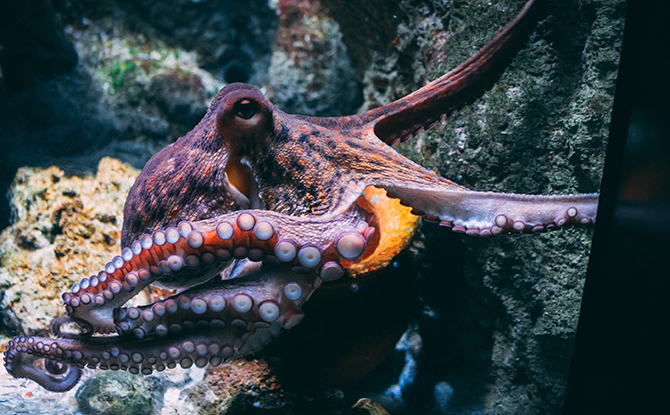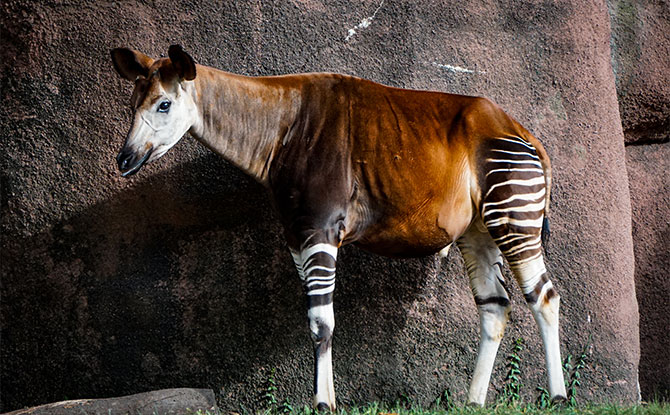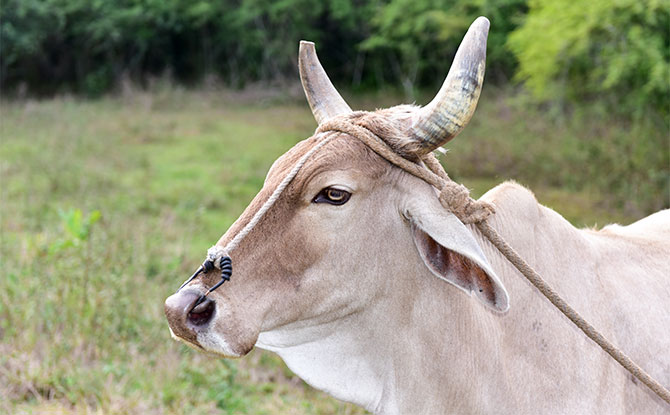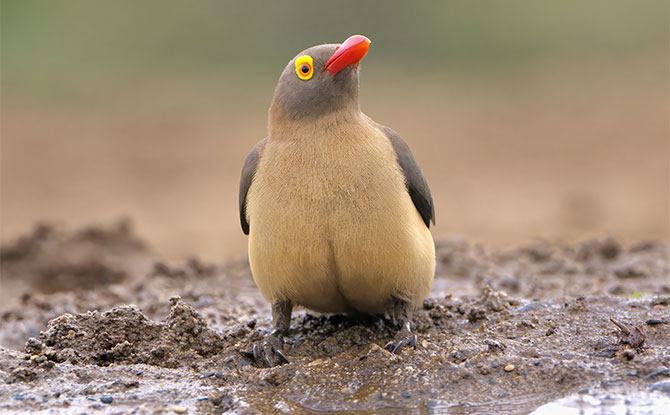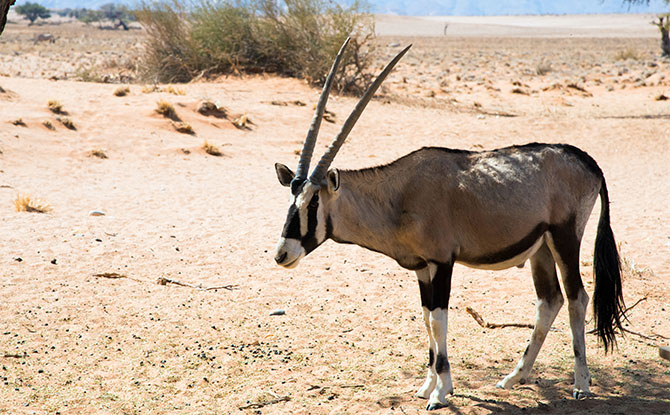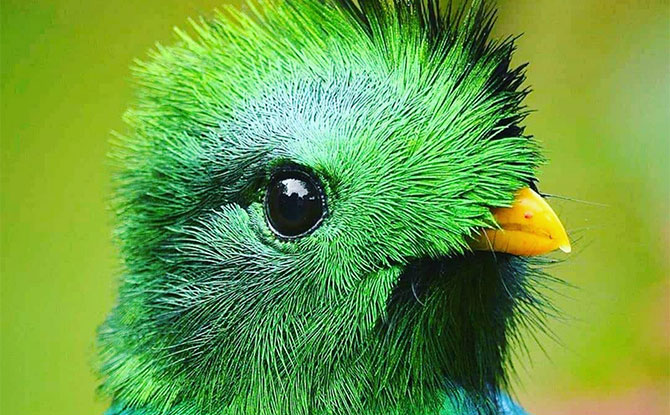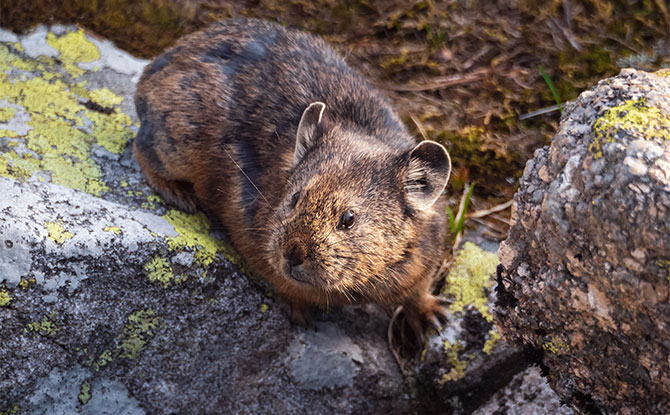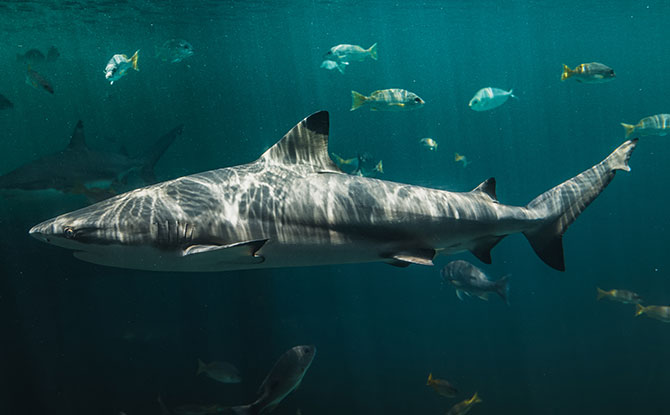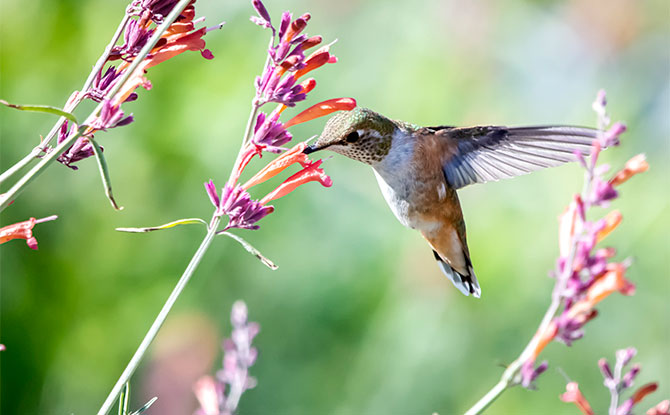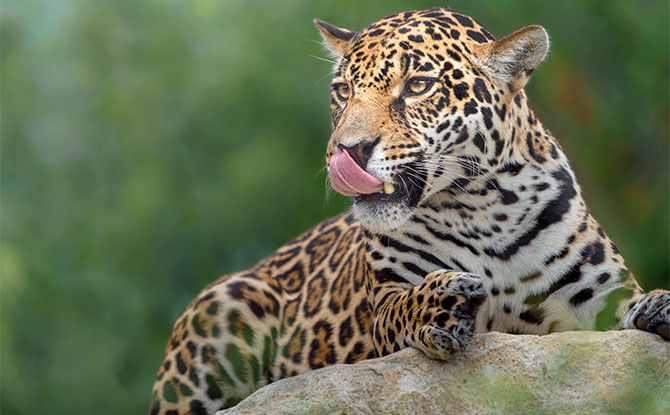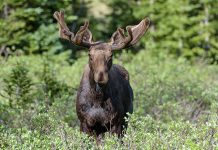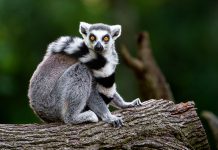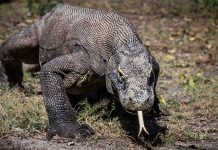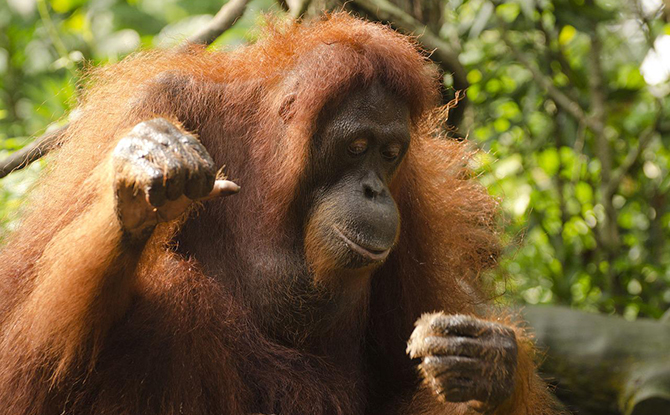
There is a fascinating array of animals starting with O, and we are excited to explore some of them with you. From exotic mammals to marine species and feathered friends, the animal kingdom offers a diverse selection of O animals. Prepare to be amazed by their unique characteristics, habitats, and behaviors.
Animals Starting with O
We’ll introduce you to some remarkable animals that start with O, including the ocelot, octopus, orangutan, ostrich, otter, owl, oyster, okapi, osprey, ox, oarfish, orca, oriole, olive baboon, oxpecker, oryx, and opossum. Discover insights into the species’ scientific names, habitats and fascinating facts.
Whether you have a passion for wildlife or simply enjoy discovering new information, this article is sure to captivate your interest. So, let’s dive into the incredible world of animals that start with the letter O!
Ocelot
The ocelot, scientifically known as Leopardus pardalis, is a fascinating and beautiful wild cat species found in various habitats throughout the Americas. These nocturnal creatures can be found in rainforests, swamps, grasslands, and even deserts, demonstrating their adaptability to different environments.
FREE FOR LITTLE DAY OUT PARENTS: Sign Up for a Free Trial with ACT 3 Academy to Find Out If Drama Classes are Right for Your Child
Easter Egg Hunts: Fun For Kids & Families
Ocelots are skilled hunters and primarily feed on small mammals, birds, reptiles, and fish. Their sharp retractable claws and excellent leaping ability make them agile predators, capable of ambushing their prey with precision.
Ocelots face numerous threats and are listed as a species of concern in several regions. Habitat loss, illegal hunting, and the exotic pet trade have all contributed to their declining population. Conservation efforts are in place to protect these magnificent creatures and their habitats.
One interesting fact about ocelots is their beautiful spotted fur, which distinguishes them from other wild cats. The patterns on their coat help camouflage them in their natural surroundings, making them stealthy hunters. With their slender bodies and large eyes, ocelots have a unique appearance that captures the attention of wildlife enthusiasts.
Octopus
Octopuses are fascinating creatures that belong to the genus Octopus (Octopus spp.). They are highly intelligent and have unique abilities and behaviors that set them apart from other marine animals.
There are hundreds of species of octopuses, each with its own distinctive characteristics and adaptations. These species vary in size, with the smallest measuring just a few centimeters in length, and the largest reaching up to 9 meters long.
Octopuses are found in oceans all around the world, from the shallow coral reefs to the deep ocean depths. They are known for their ability to change color and texture, enabling them to blend seamlessly into their surroundings and avoid predators.
These impressive creatures have a wide-ranging diet that includes fish, crustaceans, and mollusks. They are skilled hunters and use their flexible arms and tentacles to capture and manipulate their prey.
One of the most fascinating facts about octopuses is their ability to regenerate limbs. If an octopus loses an arm, it can grow it back over time. Additionally, they have incredible problem-solving skills and can even open jars and solve puzzles.
While some species of octopuses are abundant, others are facing conservation threats due to habitat destruction, pollution, and overfishing. It is important to protect these incredible creatures and their diverse habitats to ensure their survival for future generations.
Read more incredible facts about octopuses for kids.
Orangutan
The orangutan, scientifically known as Pongo spp., is a fascinating species that is native to the rainforests of Borneo and Sumatra. These incredible creatures are known for their unique behavior and close genetic relationship to humans.
Orangutans are highly intelligent and have a complex social structure. They primarily live a solitary lifestyle, with adult males occupying large territories. These gentle giants are mainly arboreal, spending most of their time high up in the trees.
The diet of orangutans consists mainly of fruits, but they also consume leaves, bark, and occasionally insects. Their strong jaws and sharp teeth allow them to extract the pulp from hard-shelled fruits and crack open nuts.
Unfortunately, orangutans are currently facing a critical conservation status, primarily due to habitat loss and illegal hunting. These factors have resulted in a significant decline in their population, making them an endangered species.
Orangutans continue to captivate researchers and conservationists with their incredible intelligence, adaptability, and resemblance to humans. By raising awareness and supporting conservation efforts, we can help ensure the survival of these remarkable creatures for future generations.
Ostrich
The ostrich, scientifically known as Struthio camelus, is a fascinating and unique bird species found in various habitats. These incredible creatures are the largest and fastest-running birds in the world, making them truly remarkable.
Ostriches are native to the savannas, grasslands, and deserts of Africa, where they have adapted to thrive in diverse environments. They are well-suited to their habitats and have evolved various physical characteristics to survive in these regions.
One of the standout features of the ostrich is its ability to run fast. With their long legs and powerful muscles, ostriches can reach speeds of up to 43 miles per hour, making them the fastest running birds on the planet. This extraordinary speed helps them evade predators and protect their young.
In addition to their impressive running ability, ostriches are also known for their large size. Adult males can reach heights of up to 9 feet and weigh over 300 pounds, while females are slightly smaller. Their size makes them easily recognizable and adds to their unique charm.
While they are renowned for their physical attributes, ostriches also have fascinating behaviors. For example, they have a unique defensive strategy of using their long legs to deliver powerful kicks to potential threats. This behavior, combined with their incredible speed, helps to ensure their survival in the wild.
Another interesting fact about ostriches is their egg-laying behavior. While the females are responsible for incubating the eggs during the night, the males take over during the day. This shared parental responsibility is a unique characteristic among bird species.
Otter
Otters are fascinating creatures known for their playful behavior and their ability to thrive in aquatic environments. These semiaquatic mammals belong to the genus Otter spp. and exhibit a range of captivating behaviors and adaptations.
Otters can be found in various regions around the world, including North America, Europe, and Asia. They inhabit rivers, lakes, and coastal areas, demonstrating their adaptability to different water environments.
Otters are known for their playful nature, often engaging in acrobatic activities such as sliding down riverbanks and diving underwater. This behavior not only provides entertainment but also helps strengthen social bonds within otter communities.
When it comes to diet, otters are carnivorous and primarily feed on fish. They are skilled hunters, using their sharp teeth and strong jaws to catch and consume their prey. Some otter species, such as the sea otter, are known for using tools like rocks to crack open shells of prey like shellfish.
Otters come in different species, each with its unique characteristics. For example, the Asian small-clawed otter (Aonyx cinereus) is the smallest otter species, while the giant otter (Pteronura brasiliensis) holds the title for the largest otter species.
Otters are captivating creatures with their playful behavior, aquatic habitat, and fascinating adaptations. Their ability to thrive in water environments and their important role in freshwater ecosystems makes them a critical species to protect and conserve.
Owl
Owls are fascinating creatures. There are numerous owl species found worldwide, each with its own unique characteristics and habitats.
Owls are known for their exceptional night vision and the ability to hunt silently. They have specialized feathers that allow them to fly silently through the night, making them excellent hunters. Their exceptional hearing and eyesight enable them to locate and capture prey in the dark.
One interesting characteristic of owls is their ability to rotate their heads up to 270 degrees. This flexibility allows them to spot prey from various angles without having to move their bodies significantly.
The different owl species have adapted to various habitats, ranging from dense forests to open grasslands. Each species has specific characteristics that make it well-suited for its particular environment, such as camouflage feathers to blend in with trees or long wings for efficient flight in open spaces.
Despite their impressive hunting abilities, owls are not at the top of the food chain. They play an essential role in controlling populations of rodents, insects, and other small creatures, which helps to maintain ecological balance.
Oyster
In this section, we’ll explore the fascinating world of oysters and their ecological importance as filter feeders. Oysters, scientifically known as Oyster spp., are a diverse group of bivalve mollusks found in various aquatic habitats around the world.
Oysters belong to the kingdom Animalia and the phylum Mollusca, making them part of the rich diversity of marine life. They are known for their distinctive hard shells, which consist of two halves connected by a hinge.
There are several species of oysters, each with its own unique characteristics. Some common oyster species include the Pacific oyster (Crassostrea gigas), the Eastern oyster (Crassostrea virginica), and the Olympia oyster (Ostrea lurida).
Oysters play a vital role in their ecosystems as filter feeders. They draw in water through their gills and extract tiny particles of food, such as plankton and detritus, from the water column. In the process, they help to improve water quality by filtering out impurities and excess nutrients.
Oyster farming, also known as oyster aquaculture, is an important industry worldwide. It involves cultivating oysters for commercial purposes, such as food production and restoration of oyster populations. Oyster farming methods include both traditional methods, like bottom-cage cultivation, and more modern techniques, such as floating bag systems.
An interesting fact about oysters is that they are sequential hermaphrodites, meaning they can change genders multiple times throughout their lives. This unique characteristic allows them to reproduce more efficiently and adapt to changing environmental conditions.
Oysters are crucial for maintaining healthy marine ecosystems. Their ability to filter large volumes of water is instrumental in promoting water quality and supporting a diverse range of aquatic life. Whether enjoyed on a plate or admired in their natural habitat, oysters are a fascinating species worth appreciating.
Okapi
The okapi, scientifically known as Okapia johnstoni, is a unique and fascinating animal that is native to the Democratic Republic of Congo in Central Africa. Okapis are often referred to as the “forest giraffes” because of their long necks and striped patterns. They are the only living relatives of giraffes.
Okapis mainly inhabit the dense rainforests of the Ituri and Epulu regions, where they feed on leaves, fruits, and other vegetation. They have a specialized tongue, ranging from 10 to 18 inches in length, which they use to strip the leaves from trees and shrubs.
These remarkable creatures are known for their solitary and elusive nature, making them difficult to spot in the wild. They possess excellent hearing and can rotate their ears to detect sounds from different directions, helping them avoid predators.
The okapi is a captivating species that showcases the wonders of nature. With their distinctive appearance and endangered conservation status, they remind us of the importance of preserving our planet’s biodiversity for future generations.
Osprey
The osprey, also known as Pandion haliaetus, is a fascinating bird of prey that can be found in various habitats around the world. These birds are known for their unique migratory patterns and impressive hunting abilities.
Ospreys primarily inhabit coastal areas, lakes, and rivers where they can find a sufficient food supply. They have a widespread distribution, including regions of North America, Europe, Asia, and Australia.
One of the most remarkable features of ospreys is their diet. Unlike other birds of prey, ospreys feed almost exclusively on fish. They have developed specialized adaptations for hunting fish, including sharp curved talons and reversible outer toes that provide a firm grip on slippery prey.
Ospreys are highly skilled hunters and have a distinctive hunting behavior. They can be seen soaring high above the water, scanning the surface for fish. Once they spot their prey, they plunge feet-first into the water to catch the fish with their sharp talons.
In addition to their impressive hunting skills, ospreys are known for their remarkable migratory journeys. These birds undertake long-distance migrations, traveling thousands of miles each year between their breeding and wintering grounds.
During their migratory journey, ospreys rely on their navigational abilities and environmental cues to navigate across vast distances. They follow specific migration routes, often flying along coastlines or crossing open bodies of water where they can find abundant food sources.
Ospreys are also known for their impressive aerial acrobatics. During courtship displays, males perform elaborate flight maneuvers, showcasing their agility and strength to attract females.
The osprey, or Pandion haliaetus, is a remarkable bird of prey with unique habitat preferences, hunting behaviors, and migratory patterns. Their ability to hunt fish and undertake long-distance migrations make them an important and awe-inspiring species in the avian world.
Ox
Oxen belong to the Bos spp. species and have played a significant role in the history of agriculture and transportation. These sturdy and strong animals have been domesticated by humans for centuries, providing essential labor and power in many cultures around the world.
There are different species of oxen, each with their own unique characteristics. The oxen species includes the well-known Bos taurus, Bos indicus, and Bos primigenius. Each species has adapted to various environments and has different physical attributes.
The domestication of oxen has been crucial for human civilization. These animals have been used for plowing fields, pulling carts, and carrying heavy loads. Oxen have become integral to farming practices, enabling the cultivation of land for food production.
Oxen have also played a significant role in transportation. Their strength and endurance have made them ideal for pulling wagons and carts, allowing people to travel long distances and transport goods.
While oxen are no longer as commonly used in modern agricultural practices and transportation, they still hold cultural and historical importance. In some societies, oxen are appreciated for their symbolism of strength, hard work, and reliability.
Oarfish
The oarfish, scientifically known as Regalecus spp., is a fascinating marine creature that has captured the attention of scientists and deep-sea enthusiasts alike. This elusive fish is known for its unique physical characteristics, including its long and slender body, which can reach lengths of up to 36 feet (11 meters).
Oarfish typically inhabit deep waters, often descending to depths of 3,000 feet (900 meters) or more. They are found in oceans around the world, with sightings reported in the Atlantic, Pacific, and Indian oceans. Due to their preference for deep waters, encounters with oarfish are relatively rare.
One of the most intriguing aspects of oarfish behavior is their habit of swimming in a vertical position, with their heads pointing downwards. This posture, combined with their long, ribbon-like bodies, gives them an otherworldly appearance as they move through the water.
While oarfish are not commonly encountered by humans, their appearances on the surface or washed up on shore have sparked fascination and speculation throughout history. In some cultures, these sightings have been associated with legends of sea serpents or other mythical creatures.
Although there is limited scientific data on oarfish populations and conservation status, their deep-sea habitat and elusive nature make them difficult to study. However, it is believed that oarfish play an important role in marine ecosystems as part of the oceanic food chain.
The oarfish is a remarkable creature with its long and slender body, unique swimming posture, and mysterious deep-sea habitat. While there is still much to discover about these enigmatic fish, their presence in the ocean reminds us of the vast and diverse wonders that lie beneath the surface.
Discover more interesting facts about oarfish.
Orca
The orca, also known as the killer whale, is a highly intelligent and social marine mammal. Its scientific name is Orcinus orca. Orcas are found in oceans all over the world, including both cold and tropical waters. They have a distinct black and white coloration, with a large dorsal fin on their back.
Orcas are known for their complex social structure, living in pods consisting of family groups. These pods can have up to 40 members and are led by a dominant female called the matriarch. Orcas communicate through a variety of vocalizations, including clicks, whistles, and calls, which are specific to each pod.
Orcas are powerful hunters and have a diverse diet. They primarily feed on fish, such as salmon and herring, but also have been known to hunt and eat marine mammals, including seals, sea lions, and even other whales. Orcas employ sophisticated hunting techniques, such as cooperative hunting and beaching themselves on shorelines to catch prey.
One interesting behavior of orcas is their ability to engage in “spy-hopping”, where they partially lift their heads out of the water in order to observe their surroundings. Orcas are also known for their acrobatic displays, leaping out of the water and slapping their tails and flippers on the surface, possibly as a form of communication or play.
Despite their status as apex predators, orcas are considered a vulnerable species. They face threats such as pollution, habitat destruction, and climate change, which impact their availability of prey. Conservation efforts are important to ensure the survival of these magnificent creatures in the wild.
Discover more interesting whale facts for kids.
Oriole
The oriole is a vibrant and fascinating bird species that belongs to the family Oriolidae. There are several different species of orioles, each with its own unique characteristics and behaviors.
Orioles are known for their distinctive colors, often showcasing vibrant hues of orange, yellow, and black. These colors make them a delight to observe in the wild, and their bright plumage adds a splash of color to their natural habitats.
One notable aspect of orioles is their migratory patterns. Many oriole species are known for their impressive long-distance migrations. They undertake these journeys to take advantage of seasonal changes in food availability and breeding opportunities. Oriole migration is a natural wonder, with bird enthusiasts eagerly awaiting their arrival each year.
While orioles are primarily found in forests and woodlands, they may also inhabit gardens, parks, and orchards, especially during their migration periods. Their habitat preference often depends on the availability of nectar, fruits, and insects, which form the main components of their diets.
In addition to their striking appearance and migratory behavior, orioles exhibit interesting behaviors such as intricate nest-building and melodious songs. Their nests are often intricately woven, suspended from branches, and provide a safe haven for their offspring. Oriole songs consist of rich and complex melodies, which add to their charm and allure.
Overall, orioles are captivating creatures that contribute to the beauty and diversity of our natural world. Their distinctive colors, migratory patterns, and unique behaviors make them a favorite among bird enthusiasts and nature lovers alike.
Olive Baboon
The olive baboon (Papio anubis) is a species of baboon known for its distinct olive-brown fur. It is one of the most widely distributed baboon species, found in various habitats across Africa, including savannas, woodlands, and mountains. Olive baboons are highly adaptable and can thrive in both terrestrial and arboreal environments.
These social primates live in large multi-male/multi-female groups, known as troops, ranging in size from 20 to over 100 individuals. Within the troop, olive baboons exhibit a complex social structure, with a hierarchy dominated by dominant males. This social hierarchy is maintained through social interactions and displays of dominance and submission.
Olive baboons are omnivorous, feeding on a wide variety of foods including fruits, seeds, leaves, insects, small mammals, and birds. They have a robust and adaptable diet, which allows them to survive in diverse and ever-changing environments.
Female olive baboons typically give birth to a single offspring after a gestation period of around 6 months. The young baboons are dependent on their mothers for several months before gradually becoming more independent. Olive baboons have a lifespan of around 20 to 30 years in the wild.
While the olive baboon population is currently stable and not classified as endangered, habitat loss and fragmentation, as well as increased human-wildlife conflict, pose ongoing threats to their long-term survival. Conservation efforts focus on protecting their natural habitats and promoting coexistence between olive baboons and local communities.
Oxpecker
Oxpeckers, belonging to the Buphagus spp., are a group of bird species known for their unique ecological relationship with large mammals. These birds have a fascinating behavior of cleaning parasites off the bodies of their hosts, such as oxen, rhinos, and buffalos.
There are two species of oxpeckers: the red-billed oxpecker and the yellow-billed oxpecker. The red-billed oxpecker (Buphagus erythrorhynchus) is commonly found in East Africa, while the yellow-billed oxpecker (Buphagus africanus) is primarily found in Southern Africa. Both species have a mutualistic symbiotic relationship with their hosts, where the oxpeckers benefit by gaining a source of food from feeding on parasites and ticks, while the hosts benefit by ridding themselves of these pests, thus reducing the risk of infection and disease.
Oxpeckers exhibit interesting behaviors while cleaning their hosts. They often perch on the mammals’ backs or heads and meticulously search through their fur or feathers to find parasites. These birds have specially adapted bills that allow them to pick off and consume ticks and other small insects. They also produce hissing or chattering sounds to communicate with each other and alert their hosts to potential dangers.
Although oxpeckers have a beneficial relationship with their hosts, they can sometimes cause small wounds or irritate the animals’ skin while removing parasites. However, these wounds are generally minor and heal quickly.
Oxpeckers are fascinating birds that play an important role in the ecosystems they inhabit. Their unique cleaning behavior and symbiotic relationship with large mammals make them a remarkable example of nature’s intricate connections.
Oryx
The oryx, belonging to the Oryx spp. genus, is a remarkable species known for its unique adaptations and survival in arid environments. These graceful antelopes can be found in various parts of the world, including Africa and the Middle East.
One of the notable characteristics of oryx species is their ability to withstand extreme temperatures and water scarcity, making them well-adapted to deserts and semi-arid regions. Their efficient cooling system minimizes water loss, allowing them to conserve precious resources in harsh environments.
With their long, straight horns and striking markings, oryx species are truly impressive to behold. These magnificent creatures gather in herds, displaying social behavior and cooperative defense strategies against predators.
The oryx, with its remarkable adaptations and conservation significance, serves as a symbol of resilience in challenging environments. By continuing to prioritize their conservation, we can help preserve these magnificent creatures for future generations to admire and cherish.
Opossum
The opossum, belonging to the family Didelphidae, is an intriguing creature known for its unique behaviors and characteristics. These small to medium-sized marsupials are native to the Americas and have adapted to a wide range of habitats, from forests to urban environments.
One of the most fascinating features of opossums is their ability to play dead as a defense mechanism. When faced with a potential threat, they enter a state of tonic immobility, where they become completely still and unresponsive. This behavior confuses predators, giving the opossum a chance to escape. During their “playing dead” act, they may release a foul odor to further deter their attackers.
In addition to their knack for acting, opossums are also skilled climbers and are excellent scavengers. Their diet consists of a wide variety of foods, including fruits, insects, small mammals, and even carrion. They have a remarkable adaptability to different food sources, allowing them to survive in various environments.
While opossums may not be the most glamorous animals, they play an essential role in maintaining the ecosystem. As opportunistic omnivores, they help control pest populations by feeding on insects and small rodents. Opossums also aid in seed dispersal through their diet, contributing to the growth and diversity of plant species.
We hope that you have enjoyed discovering and learn about all these animals that start with the letter O. If you have, we think that you will also enjoy these animals that start with N.





